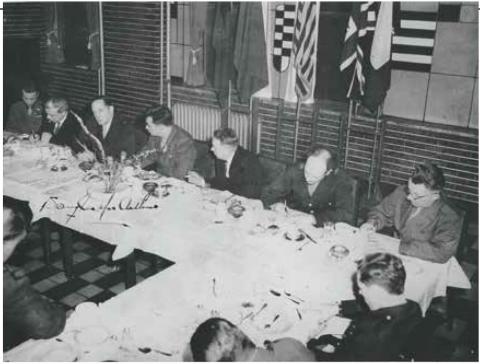Issue:

THIS SIGNED PHOTO OF MacArthur symbolizes both the ending of hostilities and the beginning of a peaceful Japan under a new Constitution. MacArthur reputedly had thorny relationships with the press, as described in our history book, Foreign Correspondents in Japan, but chose the Club to make this historic announcement. (A more detailed description of the event can be found in the book.)
While leading United Nations forces during the Korean War, friction with President Truman over limiting that conflict to the peninsula on which it was being fought resulted in MacArthur’s dismissal as SCAP (Supreme Commander Allied Powers) in April of 1951. This was received with great dismay in Japan, where he was highly respected. From the Emperor on down through both houses of the Diet to the man on the street, the reaction was one of sympathy and sorrow. More than 200,000 lined the streets along the route to Haneda airport early on the morning of his departure to wave goodbye.
Although he was not to oversee the end of the Occupation, MacArthur had brought sweeping political, economic, and social change and thus a new beginning to Japan. He left an indelible mark.
— Charles Pomeroy

